
Rhodes, a wonderful Greek island located in the Dodecanese archipelago, was an important power in the Middle Ages due to its strategic location on the Persian fishing routes of the Mediterranean Sea. The medieval town is located in the north-eastern part of the island.
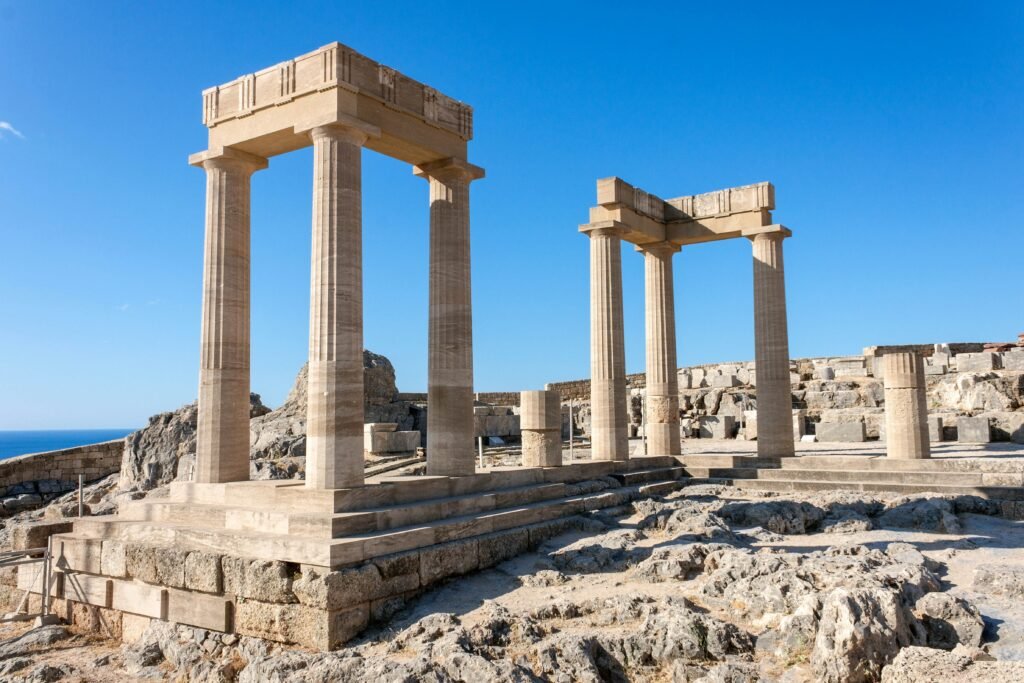
Rhodes has been famous since antiquity as the site of Colossus of Rhodes, one of the Seven Wonders of the Ancient World. The citadel of Rhodes, built by the Hospitalliers, is one of the best-preserved medieval towns in Europe. The Medieval city is designated as a UNESCO World Heritage Site.
Acropolis
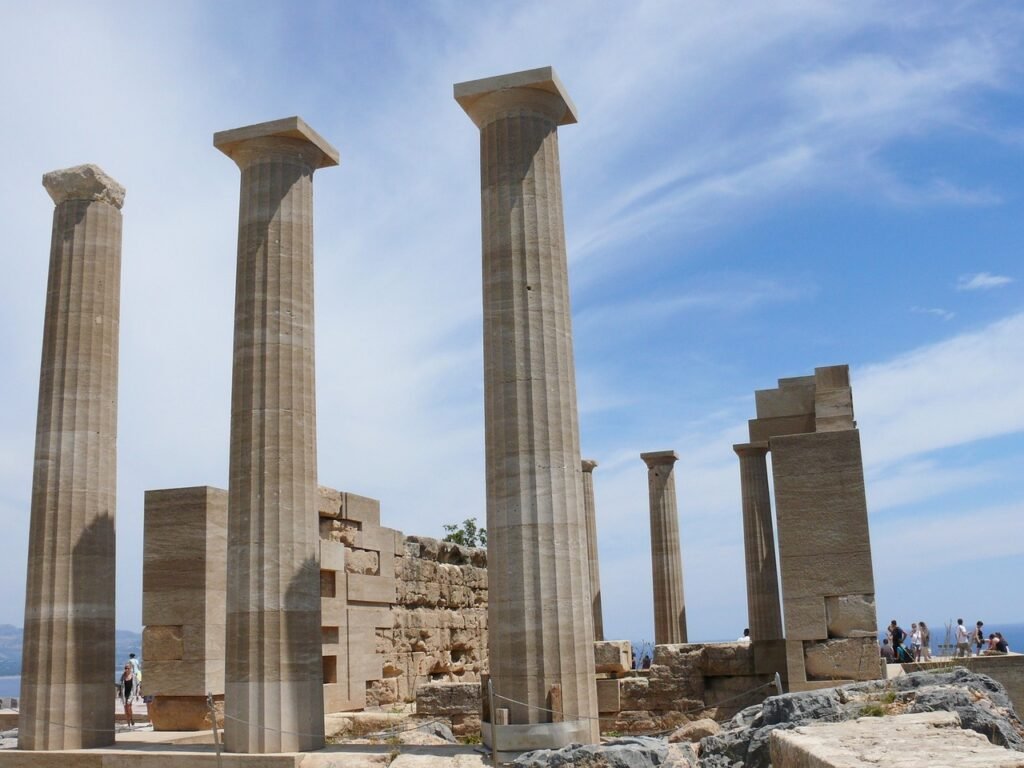
The Acropolis of Rhodes is the acropolis or upper city of ancient Rhodes, located 3 kilometers southwest of the center of the modern city.The Acropolis stood on the hill now known as Monte Smith. The green and beautifully laid out archaeological park contains the Hellenistic stadium, built in the 3rd century BC, where the athletic events of the Alioi Games took place. These were a part of the major festival of the ancient Rhodians held in honour of the sun-god Helios.
Odeon And Olympic Stadium
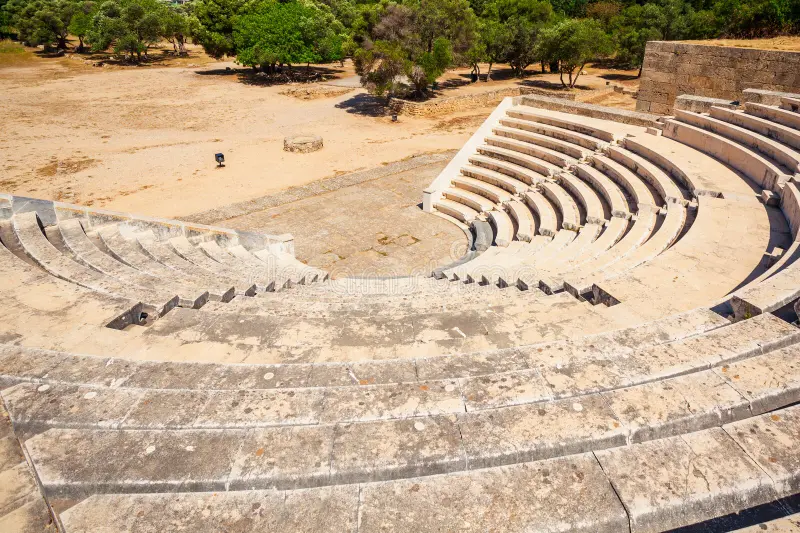
One of the must-see sights in the ancient Acropolis of Rhodes is the ancient Olympic Stadium. Already in the times of the ancient Greeks, competitive sports were a way of life for many. It’s a lot of hours of entertainment, like an older version of the Olympic Games.
Today you can enter the ancient remains of the Olympic Stadium, sit on stone seats and admire the Odeon, where various plays by actors were also performed.

Fortifications
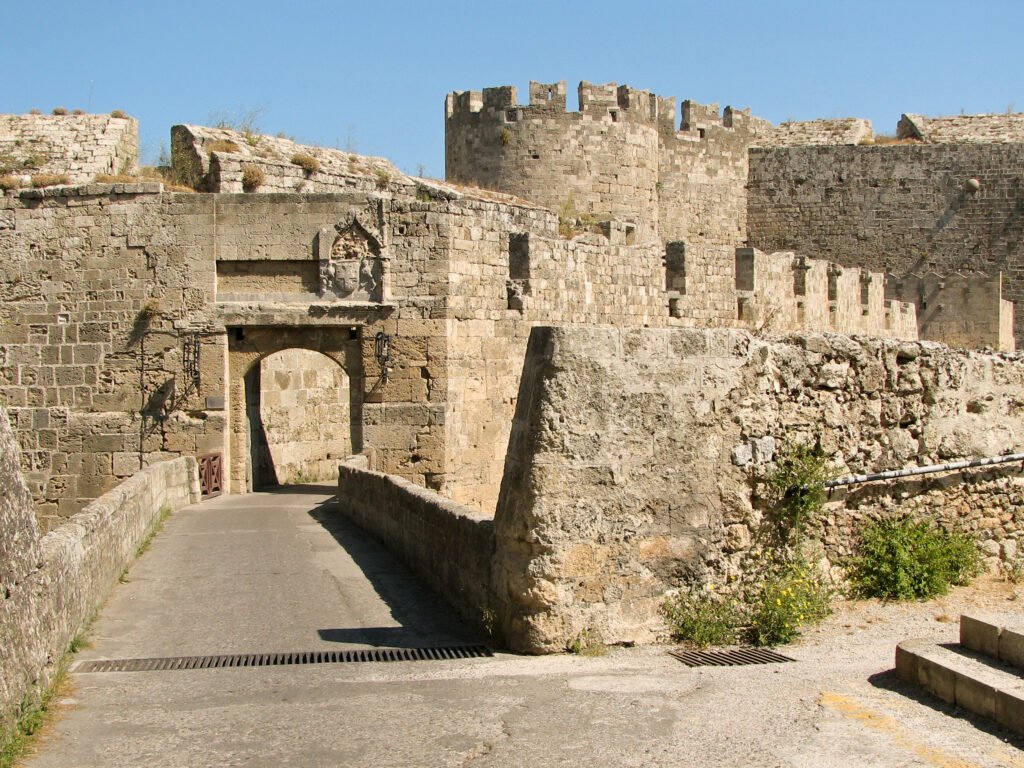
The medieval knights of the Knights Hospitaller of Saint John built one of the greatest defensive wonders in medieval history. The fortifications of Rhodes were built on top of preexisting Byzantine walls starting from 1309, the year that they took possession of Rhodes after a three-year struggle. The medieval knights used their military skills and knowledge to build these medieval defenses which are still standing today.
Temple of Aphrodite
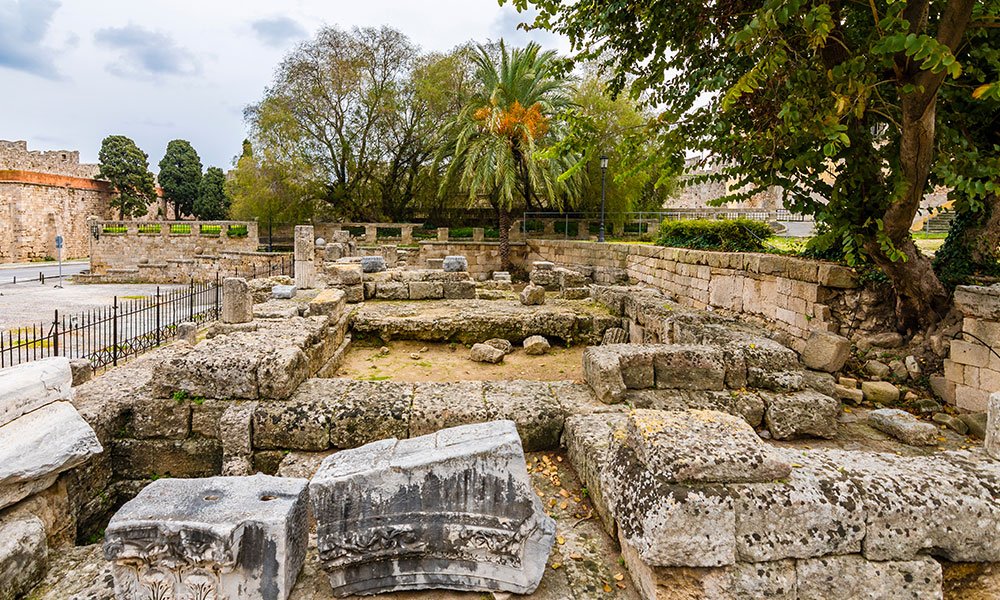
Entering the old medieval city of Rhodes through the Eleftherias (Liberty) Gate the first thing we came across was of the Temple of Aphrodite, the Greek goddess of love and beauty. Built near a preserved section of Hellenistic fortifications around Symi Square, long before any Christian or Muslim invaders occupied the city. It is still possible to imagine the temple’s former glory, looking closely at the blocks and fallen columns, we could still make out some of the two-thousand-year-old inscriptions on them.
Temple of Athena Polias and Zeus Polieus

It is believed that the temple dedicated to Athena Polias and Zeus Polieus was located on the northern side of the local Acropolis. Given the large size of the remaining column drums—up to 1.2 meters in diameter—it’s inferred that the temple was quite sizable. This sacred site revered both Athena and Zeus, key deities of worship in ancient Greece for an extended period. Excavations in the area have unearthed Athena figurines, further linking the site to the goddess.
Zeus Temple
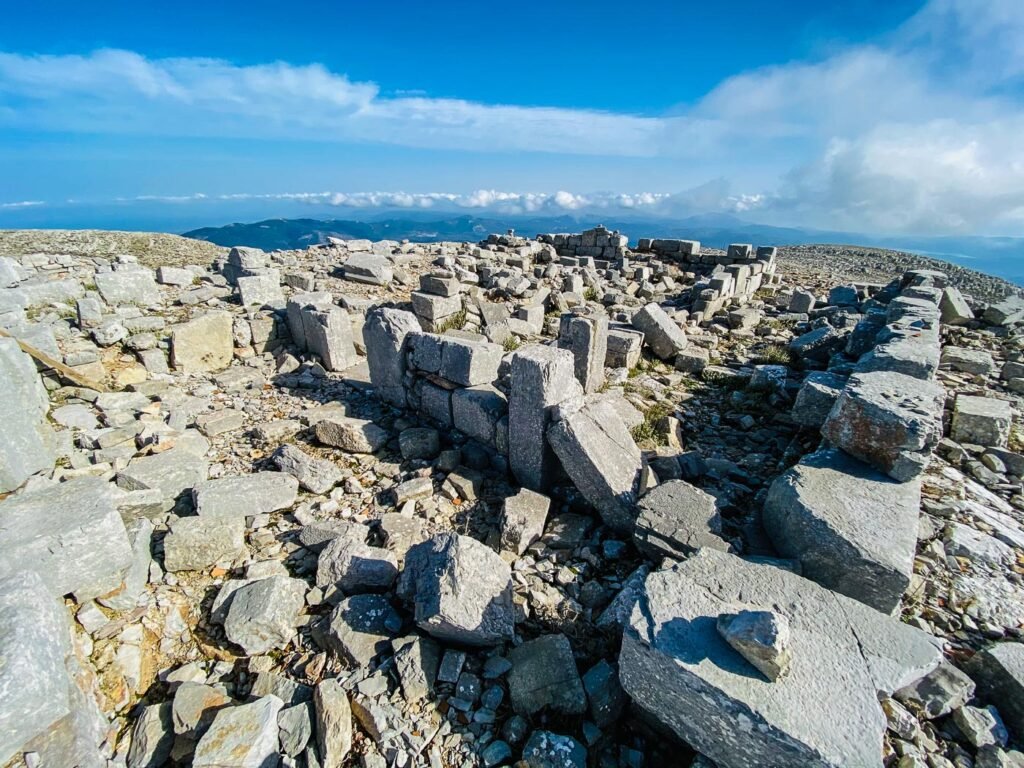
Today this ancient site is full of trees and lush vegetation. The temple was never entirely completed. It went under renovation many times. Unfortunately, both the temple and the statue of Zeus were destroyed by an earthquake.
